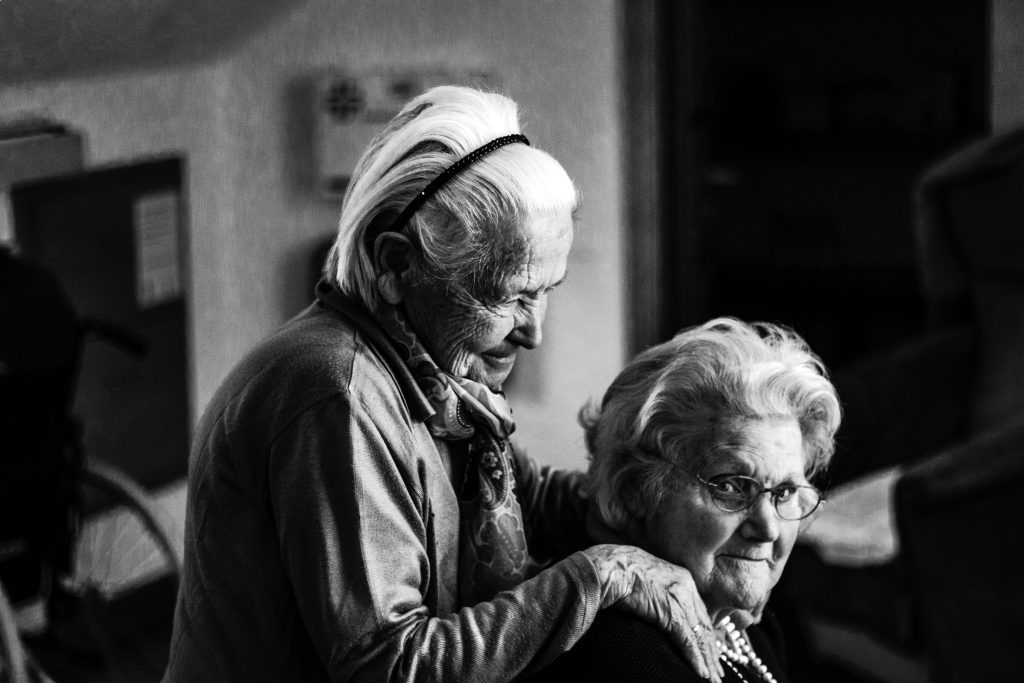
Thousands of elders are living in nursing homes despite lack of need, many against their will.
Many elderly patients get admitted to the hospital with profound weakness due to their acute and chronic medical conditions and they will leave the hospital with profound weakness from their acute and chronic medical conditions. In most situations, these patients will be too weak to take care of themselves. They will need extra help with their activities of daily living either from family or from trained home health care representatives. Patients who cannot safely return to the community often need to transition through a nursing home (with skilled nurses) before returning home.
Hundreds of thousands of older adults and younger people with disabilities are living in nursing homes only because that is where Medicaid drives them. They have no clinical need for skilled nursing care, and, if better elder care options were available, many could be living in other settings, including their own homes.
For most elderly folks, giving up their independence and being forced into a nursing home is their biggest fear. Nobody can ever force you to go anywhere you don’t want to go, as long as you have the capacity to make your own medical decision. Your doctor can’t force you, your nurse can’t force you, even your powers of attorney can’t force you. If your family is telling you that you have to go to a nursing home or skilled nursing facility and you don’t want to and you have the capacity to make that decision, no matter how poor that decision is, you have the right to go home against everyone’s wishes.
Related Posts
They May Be Out Of The Closet, But Many LGBT Seniors Are Facing Aging Alone.
Lessons From The Front: What Nursing Homes Should Learn From Covid-19
Medicaid
Medicaid—the joint state/federal health care program for the very poor—sends frail older adults to nursing homes even though they often are the most expensive and least appropriate option. And, as COVID-19 has taught us, they can be a high-risk setting for many. The Kaiser Family Foundation reports that as of Aug. 20, more than 70,000 residents and staff of long-term care facilities (including nursing homes and some assisted living facilities) have died from the pandemic. This is a complicated story, so let’s unpack it by first describing Medicaid long-term supports and services (LTSS) and then looking at nursing homes.
States must provide people who have few financial assets, very low incomes, and high levels of personal care needs with long-term care. But Medicaid is required to provide care only in nursing facilities.
States can apply for one of many special waivers that allow for care in the community. And every state has at least one. Indeed, more than half of Medicaid LTSS dollars are spent on care in settings other than nursing homes. But the level, quality, and definition of that care vary widely among the states.
Many states provide only a few hours a day of personal care. For frail older adults without a capable caregiver to navigate a complex medical and long-term care system, staying at home is difficult, if not impossible. And many of those who want care at home often cannot get it at all. In 2017, more than 185,000 older Medicaid beneficiaries were on waiting lists for home-based care
Not every frail older adult can—or should—live at home. And there are many elder care options besides nursing homes, such as assisted living, group homes, and other forms of congregate care.
But Medicaid pays for room and board only in nursing homes. In theory, an older adult could move into subsidized low-income housing, but only about 6 percent of rental housing for older adults in the US is subsidized, and many of those apartments are inappropriate for someone with physical limitations.

Nursing homes
That leaves many frail low-income seniors with only one choice. They can stay at home, try to pay their own housing costs (not just rent but utilities and other expenses), and hope for Medicaid home care support. Or move to a nursing home. This is no choice at all.
Nursing homes often are two very different businesses operating in the same building.
They provide short-term skilled nursing care, often to patients just discharged from a hospital, and mostly paid by Medicare. And they provide a home for about 700,000 long-stay residents—most of whom will remain there until they die. About 80 percent of long-stay residents are on Medicaid. While the program’s daily payment varies widely from state to state, it averages about $300.
What is the clinical benefit of living in a nursing home? In theory, it is because it can provide skilled medical care for those who need it—a much higher level of care, for example, than an assisted living facility. But do residents need that level of care?
About half have dementia or some cognitive impairment. They need help with activities such as bathing or eating. But while those elder residents need a high level of personal care, they don’t need regular treatment from a doctor or an RN.
Skilled Care
In a 2017 report, AARP found that about 11 percent of nursing home residents had a low level of personal care need. In states such as Kansas, Missouri, and Oklahoma, 20 percent or more required only this modest assistance, and far fewer need skilled nursing care. A 2018 report by Charlene Harrington and coauthors for the Kaiser Family Foundation found that, for example, just 1.6 percent required intravenous therapy, 4.5 percent required tube feeding, and 5.7 percent had a catheter. Only one in five needed injections.
Far more needed help with bowel or bladder incontinence or required some form of rehabilitation. But many of those services could be provided by a well-trained aide, therapist, or licensed practical nurse. They do not require an RN in a nursing home.
Even for those who need higher levels of treatment, nursing homes rarely have sufficient skilled nursing staff available. Harrington found that in 2016, RNs were available for an average of less than 1 hour per resident day. The government requires that an RN director of nursing be on site for only eight hours a day.
The reality is that hundreds of thousands of frail older adults are living in nursing homes only because that’s where Medicaid sends them. Today, few have better options.
My Elder is committed to helping our clients get the best medical care available. We can help you with elder-care services, including Assisted Living and Nursing Home Placement, Hospital and Nursing Home Crisis Intervention, Elder Care Monitoring, Elder Home Care Advisory, Long Term Care Planning, and more. Please contact us at 212-945-7550 if you need an elder advocate.
Photo Credits Eberhard Grossasteiger and Alex Blajan


